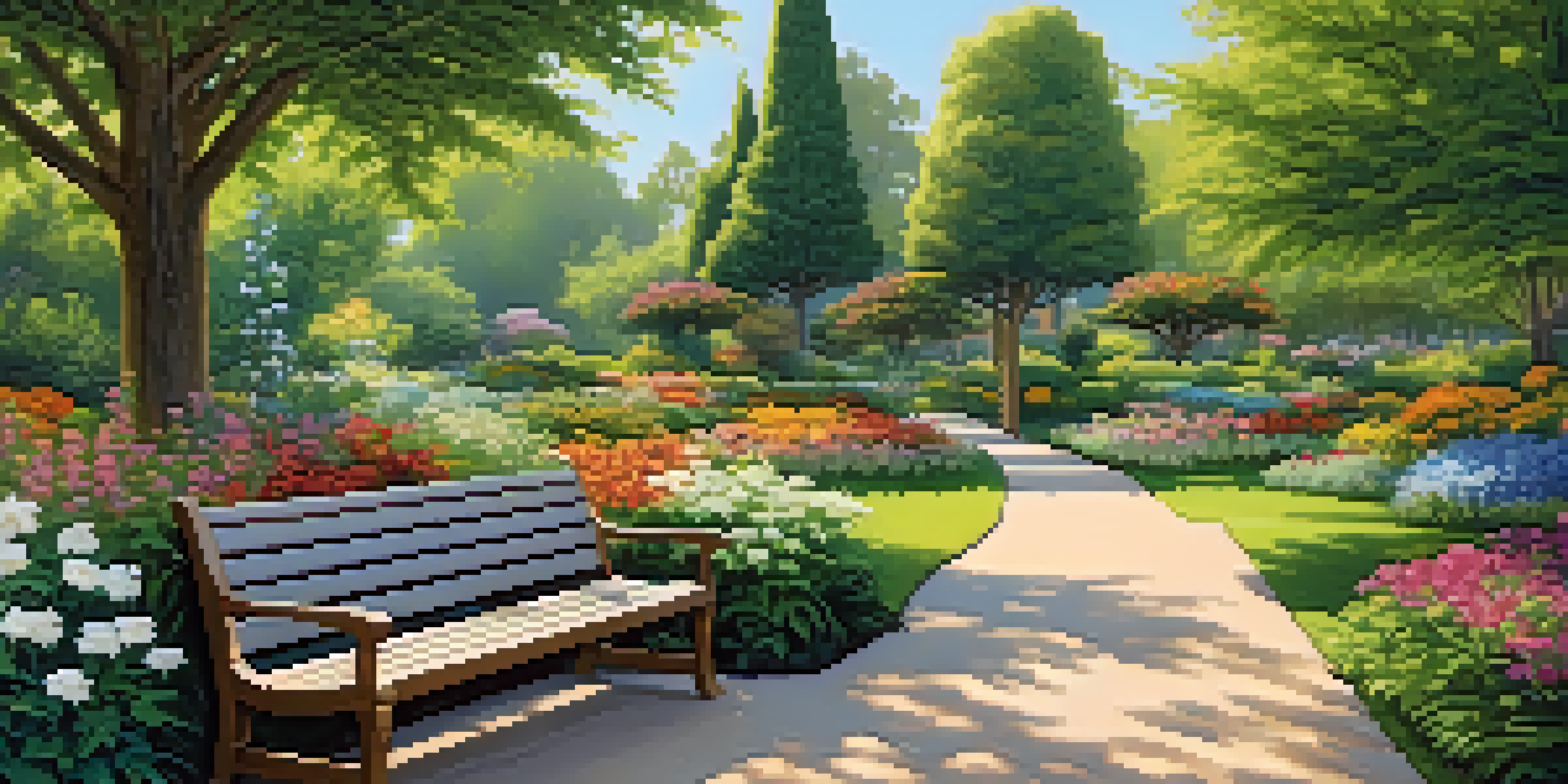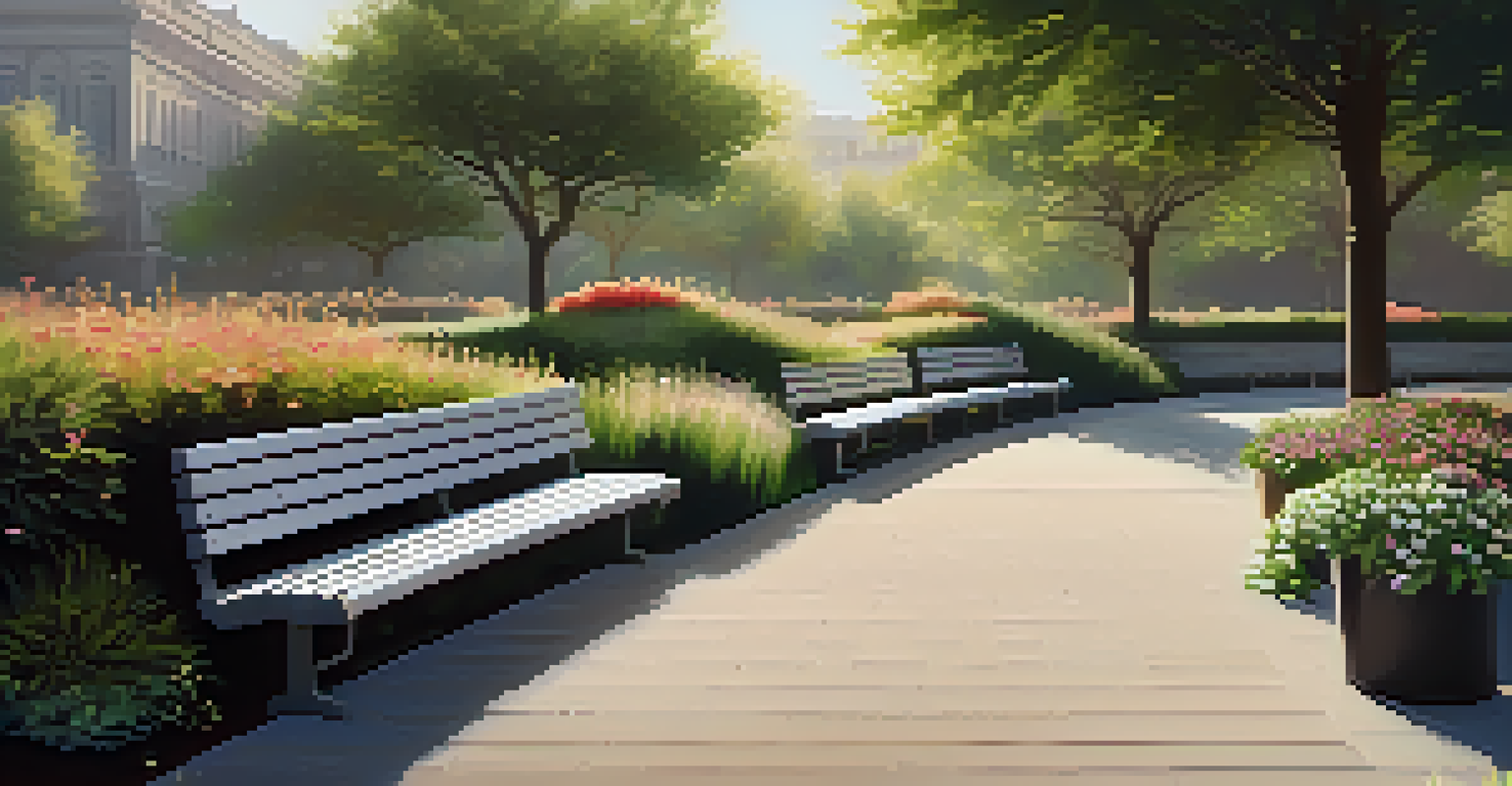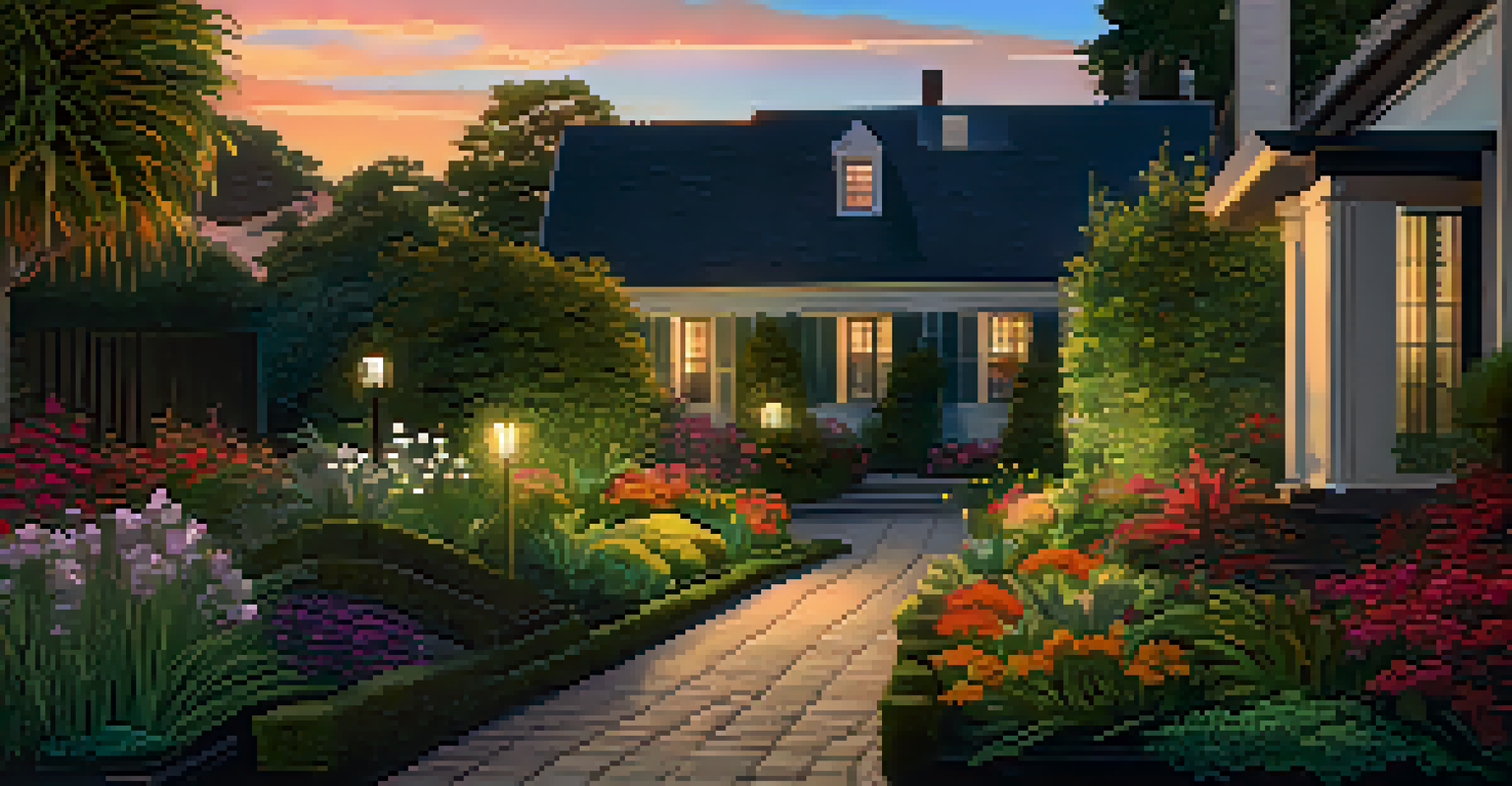Best Practices for Accessible Home Landscaping

Understanding Accessibility in Landscaping
Accessibility in landscaping means creating outdoor spaces that everyone, regardless of ability, can enjoy and navigate. This includes considering physical challenges that some people may face, such as mobility issues or visual impairments. By understanding these needs, we can design landscapes that provide equal access to all.
Accessibility is not a feature, it's a social trend.
For instance, pathways should be wide enough for wheelchairs and strollers, and should have a smooth surface to reduce bumps and jolts. Additionally, incorporating tactile elements can help those with visual impairments navigate the space more easily. This foundational understanding sets the stage for thoughtful design.
Ultimately, accessible landscaping fosters inclusivity and encourages community interaction. When we create spaces that everyone can enjoy, we not only enhance the beauty of our homes but also promote a sense of belonging.
Selecting the Right Plants for Accessibility
Choosing the right plants is crucial for creating an accessible landscape. Opt for low-maintenance and hardy plants that can thrive in your local climate. This reduces the need for strenuous upkeep, making it easier for everyone to enjoy the space without overwhelming tasks.

Consider using native plants, as they generally require less water and care, promoting sustainability while being friendly for various abilities. Additionally, incorporating plants with varying heights and textures can create visual interest without hindering accessibility.
Finally, select non-toxic plants, especially if children or pets are in the vicinity. This choice ensures that your landscape is safe for everyone, making it a welcoming haven for all who visit.
Designing Accessible Pathways and Entrances
Pathways are the veins of your landscape, guiding visitors through your space. Ensure that they are wide enough to accommodate wheelchairs and strollers—generally at least 36 inches wide. Smooth, non-slip surfaces are essential to prevent accidents, especially in wet conditions.
The beauty of the world lies in the diversity of its people.
Incorporate gentle slopes instead of steep steps where possible. If steps are necessary, consider adding handrails for support. This thoughtful design can make a significant difference, allowing everyone to access different areas of your garden comfortably.
Finally, ensure that entrances are clearly marked and easy to find. A well-designed landscape invites exploration, so creating inviting pathways and entrances encourages everyone to step outside and enjoy the beauty of nature.
Incorporating Seating Areas for All Abilities
Seating areas are important for rest and relaxation, and they should be designed with accessibility in mind. Choose benches with armrests to assist those who may need help sitting down or standing up. Additionally, make sure seating is at a comfortable height for everyone.
Consider placing seating in various areas of your landscape to encourage social interaction and provide rest stops along pathways. This arrangement can make a stroll through the garden more enjoyable for all visitors, regardless of their stamina.
Lastly, create shaded areas where people can relax during hot days. Accessible seating encourages people to linger, fostering connections and enhancing the overall experience of your outdoor space.
Utilizing Color and Contrast for Navigation
Color and contrast play a vital role in creating an accessible landscape, especially for those with visual impairments. Using contrasting colors can help define pathways, plant beds, and seating areas, making it easier for everyone to navigate the space. For example, a dark path against a lighter garden bed can guide the eye effortlessly.
Incorporating bright, bold colors in plants can not only enhance visual appeal but also signal different zones within your landscape. This can help visitors understand where to go and what to explore, reducing confusion and enhancing the experience.
Lastly, consider the seasonal changes in color as well. Choosing plants that bloom at different times can keep the landscape vibrant year-round, creating an inviting environment for everyone.
Implementing Smart Technology for Ease of Use
Smart technology can greatly enhance accessibility in home landscaping. For instance, consider installing smart lighting along pathways to improve visibility at night. Motion-sensor lights can help guide visitors safely without requiring them to fumble for switches.
Additionally, automated watering systems can simplify garden maintenance, making it easier for individuals with physical limitations to keep their gardens thriving. With less manual labor involved, everyone can enjoy the beauty of a well-kept landscape.
Finally, think about using smart apps to help navigate your outdoor space. These tools can provide information about plants, features, and accessibility options, ensuring that everyone can fully enjoy the landscape.
Creating Open Spaces for Unobstructed Movement
Open spaces are essential for ensuring that everyone can move freely through a landscape. Avoid overcrowding your garden with too many plants or decorations, as this can create barriers. Instead, opt for a balanced layout that allows for easy navigation.
Consider the placement of features like water fountains or sculptures. These can serve as focal points while still allowing for open pathways around them. This thoughtful arrangement can make the landscape more enjoyable and accessible for all.

Finally, consider leaving some areas as natural as possible, allowing for spontaneous gatherings or play. Open spaces can encourage interaction and exploration, creating a lively atmosphere for everyone.
Maintaining Your Accessible Landscape Year-Round
Maintaining an accessible landscape is key to ensuring it continues to serve everyone effectively. Regular upkeep of pathways, plants, and seating areas is essential to prevent hazards like overgrown plants or cracked surfaces. Schedule seasonal maintenance to keep your landscape in prime condition.
Additionally, consider involving family members or neighbors in the upkeep process. This not only spreads the workload but also fosters a sense of community and shared responsibility for the space. Making it a group effort can turn maintenance into a social event.
Lastly, encourage feedback from those who use the space regularly. Their insights can highlight areas for improvement, ensuring that your landscape remains accessible and enjoyable for everyone.